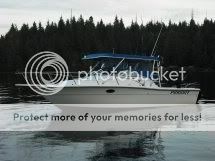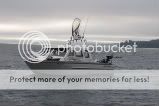Back from hunting.
Totally right on Charlie, over proping definitely more dicey than under proping. It's to bad these outboard companies did not have more historical data with some of these variables, other than mechanics opinions, but I guess if I get 200hrs less engine life due to over proping, running to much load, running 4400rpm rather than 4600rpm, and also the west coast guys running in following seas with big swells, all the time.The outboard companies get there next sale quicker.
If I run in rougher water, trim tabs are fully engaged, which reduces my speed and I still run at 4100+
The other question is because Charlie brought it up, don't sacrifice longevity for any thing, I.E fuel savings, speed ECT. There are so many variables surrounding engine life, with hard data on some variables but none on a lot of others, water conditions,prop pitch, load in boat, service intervals,and others.All these things, if you change 1 it affects the others.
I know guys have talked about it, what would be the engine life of a 4 stroke EFI optimal condition?, which few of us fall into.
I know I'm over propped but under the conditions I run in I'm fairly positive I am causing no harm to my engine. You can hear your engine work, and you can feel it with how your engine responds with throttle input. I pretty sure I will run this motor out of hours and I keep an accurate log book so only time will tell.




